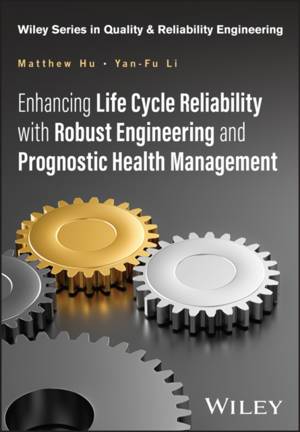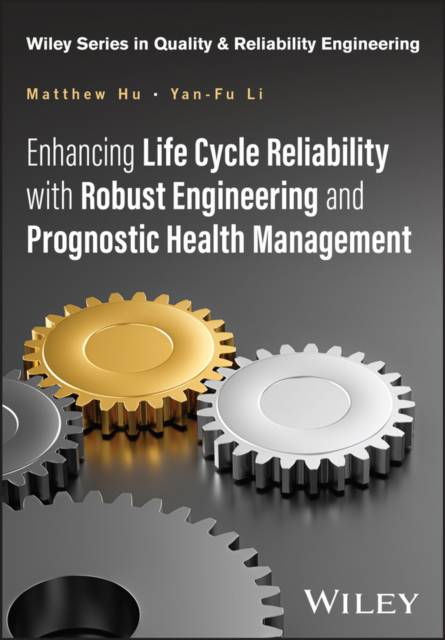
- Afhalen na 1 uur in een winkel met voorraad
- Gratis thuislevering in België vanaf € 30
- Ruim aanbod met 7 miljoen producten
- Afhalen na 1 uur in een winkel met voorraad
- Gratis thuislevering in België vanaf € 30
- Ruim aanbod met 7 miljoen producten
Enhancing Life Cycle Reliability with Robust Engineering and Prognostic Health Management
Matthew Hu, Yan-Fu LiOmschrijving
Complete process for ensuring product performance through robust concept design, robust optimization, selection, and verification in an uncontrollable user environment
Life Cycle Reliability through Robustness Development, and Prognostic and Health Management enables readers to build a robustness-thinking-based approach for robust design for reliability and prognostic health management (PHM), explaining best practices from early product design through the entire product lifecycle, leading to lower costs and shorter development cycles. The text integrates key tools and emerging reliability management systems into a comprehensive program for developing more robust and reliable technology-based products.
The text provides value-added strategies for robustness development in new products and health management with three main types of robustness development and reliability growth case studies: intrinsic, instrumental, and collective. Readers can harness multiple forms of engineering knowledge to inform decision-making within reliability contexts.
To ensure customer satisfaction, the text helps readers consciously consider noise factors (environmental variation during the product's usage, manufacturing variation, and component deterioration) and cost of failure in the field for the Robust Design method.
Written by two highly qualified authors, Life Cycle Reliability through Robustness Development, and Prognostic and Health Management includes information on:
- Effective reliability efforts in an integrated product development environment, failure mode avoidance, and reliability analysis using the physics-of-failure process
- Essential of robustness and robust design in reliability improvement, covering design-in reliability up front, eliminating failures prior to testing, and increasing fielded reliability
- Rapid, cost-effective deployment of health and usage monitoring systems and improving diagnostic and prognostic techniques and processes
- ROI analyses for PHM, selecting and deploying sensors, setting up data transmission channels, and developing data collection and data pre-processing functions
Comprehensive in scope, Life Cycle Reliability through Robustness Development, and Prognostic and Health Management is an essential resource on the subject for all individuals responsible for product development and design, increasing life-cycle product reliability, process quality, or reducing costs in a design, development, manufacturing, and maintenance.
Specificaties
Betrokkenen
- Auteur(s):
- Uitgeverij:
Inhoud
- Aantal bladzijden:
- 320
- Taal:
- Engels
- Reeks:
Eigenschappen
- Productcode (EAN):
- 9781394182381
- Verschijningsdatum:
- 27/04/2026
- Uitvoering:
- Hardcover
- Formaat:
- Genaaid

Alleen bij Standaard Boekhandel
Beoordelingen
We publiceren alleen reviews die voldoen aan de voorwaarden voor reviews. Bekijk onze voorwaarden voor reviews.








